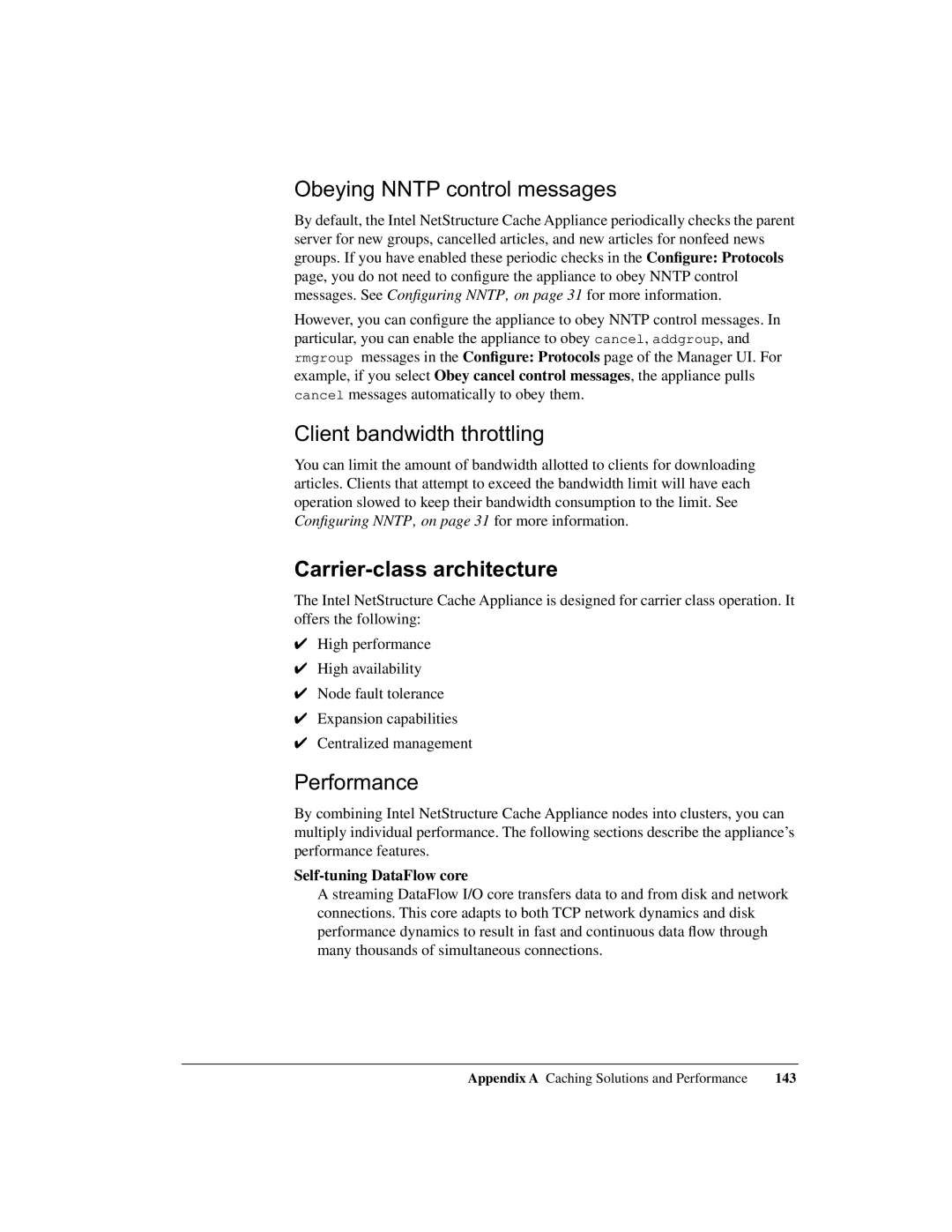Obeying NNTP control messages
By default, the Intel NetStructure Cache Appliance periodically checks the parent server for new groups, cancelled articles, and new articles for nonfeed news groups. If you have enabled these periodic checks in the Configure: Protocols page, you do not need to configure the appliance to obey NNTP control messages. See Configuring NNTP‚ on page 31 for more information.
However, you can configure the appliance to obey NNTP control messages. In particular, you can enable the appliance to obey cancel, addgroup, and rmgroup messages in the Configure: Protocols page of the Manager UI. For example, if you select Obey cancel control messages, the appliance pulls cancel messages automatically to obey them.
Client bandwidth throttling
You can limit the amount of bandwidth allotted to clients for downloading articles. Clients that attempt to exceed the bandwidth limit will have each operation slowed to keep their bandwidth consumption to the limit. See Configuring NNTP‚ on page 31 for more information.
Carrier-class architecture
The Intel NetStructure Cache Appliance is designed for carrier class operation. It offers the following:
✔High performance
✔High availability
✔Node fault tolerance
✔Expansion capabilities
✔Centralized management
Performance
By combining Intel NetStructure Cache Appliance nodes into clusters, you can multiply individual performance. The following sections describe the appliance’s performance features.
Self-tuning DataFlow core
A streaming DataFlow I/O core transfers data to and from disk and network connections. This core adapts to both TCP network dynamics and disk performance dynamics to result in fast and continuous data flow through many thousands of simultaneous connections.
Appendix A Caching Solutions and Performance | 143 |
